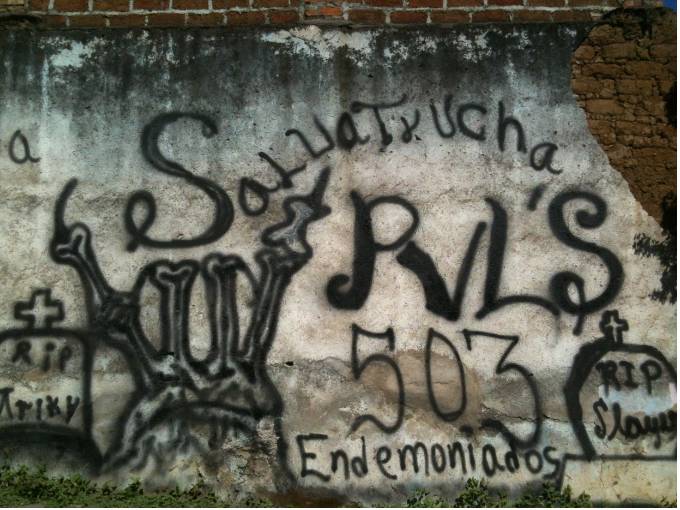Much Ado About Nothing? Local Immigration Policy, and the MS-13 ‘Threat’ Lecture Recap
Oct. 18, 2023

Assistant professor of political science at VCU Michael Paarlberg, Ph.D., gave a lecture on the imagined relationship between Central American immigration and crime rates in the United States. The lecture on October 18 was done in association with the Migration Studies Research Group at the Humanities Research Center. “Much Ado About Nothing? Local Immigration Policy and the MS-13 'Threat'” was a pertinent talk on a topic very hot in today’s political climate.
How the general public sees the imagined connection between immigration and crime does not correspond to Paarlberg and other scholars’ research into this topic, which shows that there is no connection. Paarlberg noted that areas with a large population of migrants have lower rates of crimes than areas with a smaller population of migrants. He calls the fear of migration bringing crime an “ongoing trope.”
Focusing on the gang MS-13, Paarlberg noted a major misconception: it didn’t start in Central America - it started in Los Angeles, California. The reason MS-13 is in Central America is due to deportations from the U.S., which were facilitated in 1996, when President Bill Clinton signed a law that lowered the limit of what was considered as a serious crime. Migrants in the U.S. were now able to be deported for low-level crimes.
Once deported, people were told migrants were hardened criminals and people should fear them. Though not all deportees had gang connections, those who did reconstituted gangs, as many deportees were blocked from getting jobs.
The members of the gang are not who you think. Most members are teenage boys, who have been alienated. “You don’t join the gang to get rich, you join the gang as a kind of a surrogate family.” Due to the nature of the gangs, the government hasn’t been able to “squash” them, as they’re not a single organization that is able to be jailed. These gangs are moreso a youth subculture.
The origins of Central American migration to the U.S. comes out of civil wars in El Salvador and Guatemala from the 1960s to 1990s, peaking in the 1980s. These events created a lot of out-migration, and the migrants fled the the U.S., mostly ending up in poor neighborhoods in Los Angeles. Once in the U.S., the migrants say they were picked on by neighbors who were already living there and affiliated with Mexican-American gangs. In response, the migrants joined or created their own gangs.
“If this tells you anything, MS-13 was originally called the Mara Salvatrucha Stoners...they were not really engaging in large-scale criminal activity.”
The disengagement in crime would soon end, though. When the 1984 Summer Olympics came, the LAPD got a mandate to “clean up the streets,” which to them meant mass arrests of young and mostly Black and Latino teenagers. The prison population swelled, and these juvenile delinquents ended up in the California penal system, where they became socialized into prison gang culture. The name slightly changed, dropping the stoner moniker and adding 13, to represent the letter ‘M’ in the alphabet, a tribute to the Mexican Mafia. This street gang had now transformed into a prison gang.
Paarlberg answered other questions with his research: are sanctuary cities protecting MS-13 murders, and are there links between MS-13 violent incidents and sanctuary cities? These cities are liberal and pro-immigrant, he describes, having taken in refugees from Central America in the 1980s. These cities chose not to use the local police to enforce federal immigration law, and limit cooperation with ICE. Critics claim these cities attract more crime. Despite that, Paarlberg proved that there is no difference in criminal gang activity between sanctuary and non-sanctuary cities.
In the end, Paarlberg found no significant results on the relationship between immigration, crime, MS-13, and sanctuary cities. He finds that the “threat” of MS-13 in the U.S. is overblown, comparing it to boogeymen in the history of tropes of criminal immigrants from China, Ireland, Italy and Mexico.
Thank you to Michael Paarlberg, Ph.D. and others who did this research to contradict these stereotypes revolving around immigration and gang-related crime.